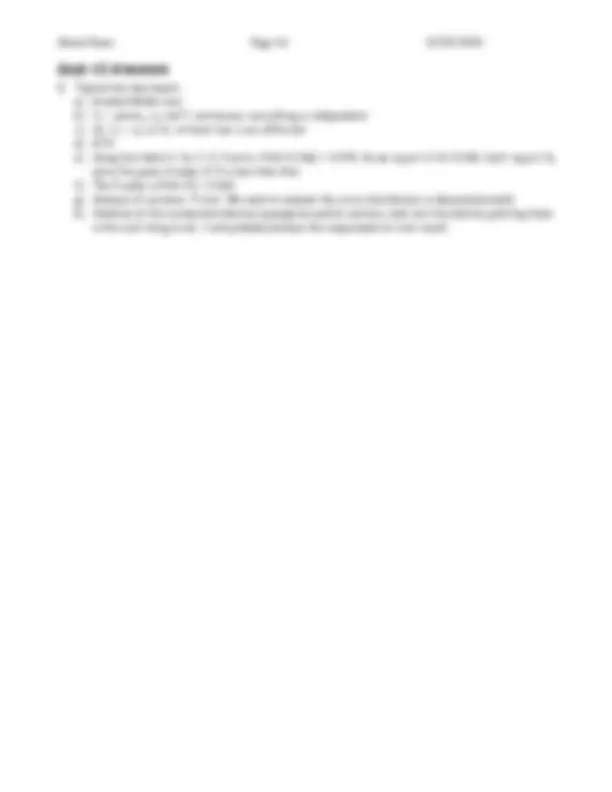



Study with the several resources on Docsity

Earn points by helping other students or get them with a premium plan


Prepare for your exams
Study with the several resources on Docsity

Earn points to download
Earn points by helping other students or get them with a premium plan
Community
Ask the community for help and clear up your study doubts
Discover the best universities in your country according to Docsity users
Free resources
Download our free guides on studying techniques, anxiety management strategies, and thesis advice from Docsity tutors
Material Type: Quiz; Class: Regression; Subject: Statistics; University: California State University-East Bay; Term: Fall 2004;
Typology: Quizzes
1 / 2

This page cannot be seen from the preview
Don't miss anything!


Jaimie Kwon Page 13 11/23/
Weight feed 1 179 horsebean 2 160 horsebean 3 136 horsebean 4 227 horsebean 5 217 horsebean 11 309 linseed 12 229 linseed 23 243 soybean 24 230 soybean 25 248 soybean 26 327 soybean 27 329 soybean 28 250 soybean
Answer the following.
a. What’s the relevant nonparametric test? b. Define the model formally/mathematically (using Xi, Yi, μ, ∆ etc) and state the necessary assumptions to apply the nonparametric test in a) c. Formally state the hypothesis (e.g. H 0 : μ=0 vs. H1: μ >0 where μ is the median …) d. Compute the test statistic (20pt). e. Suppose, for the independent data with the same dimension, the test statistic is computed to be 5.0. Can you reject the null hypothesis at 5% significance level? Answer using the corresponding table in the textbook. f. Compute the P-value for the test statistic in (e). g. What’s the equivalent parametric test? What’s the extra assumption(s) you need to make about the distribution? (be specific) h. If the parametric and nonparametric tests give different answers, with a very small P-value (say 0.001) for the parametric test and a very large P-value (say 0.20) for the nonparametric test, what could be possible explanations of the reasons why? In such case, what would you do to clarify the issue? Finally, which test result would you choose? (20pt)
Jaimie Kwon Page 14 11/23/